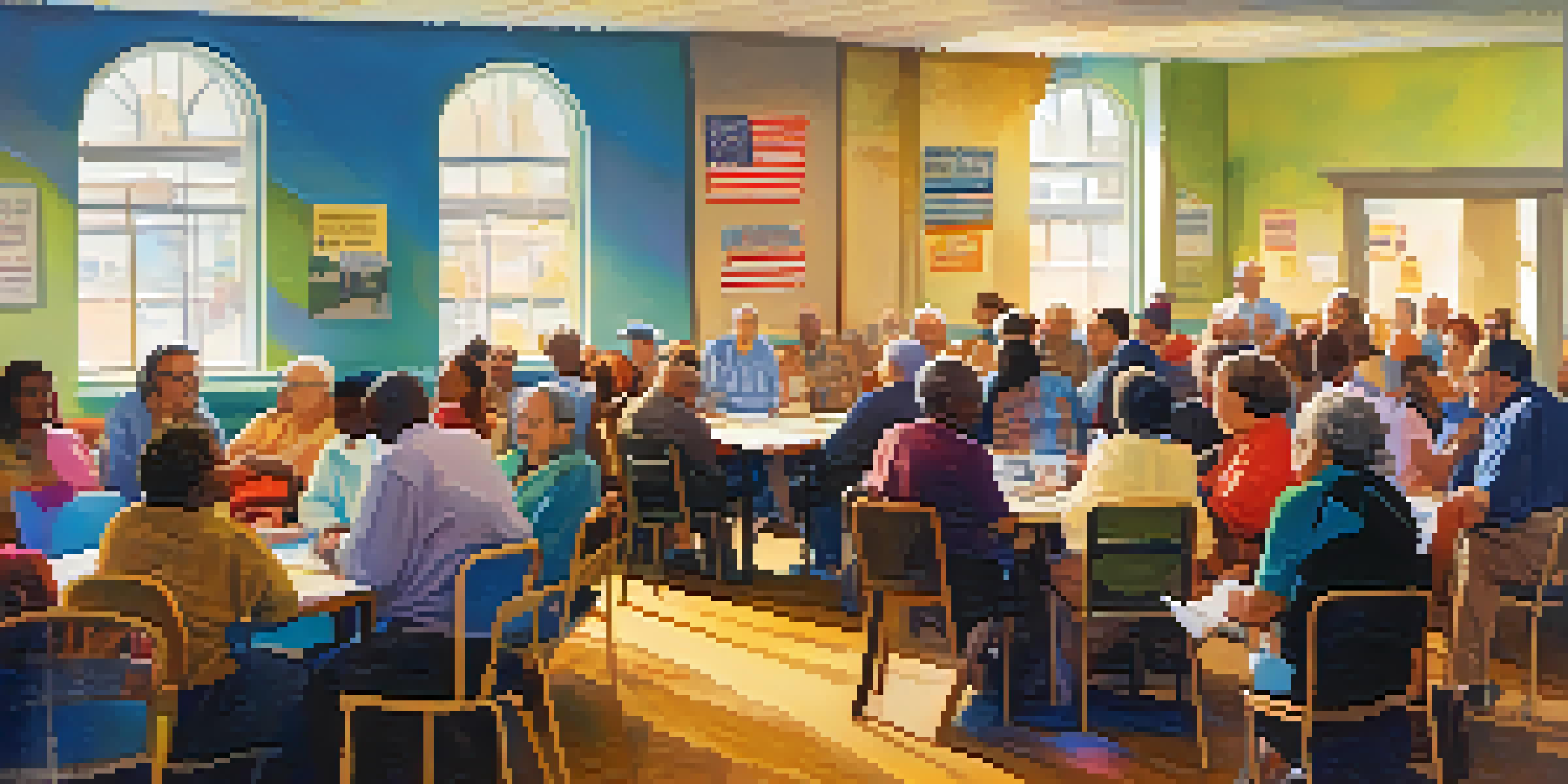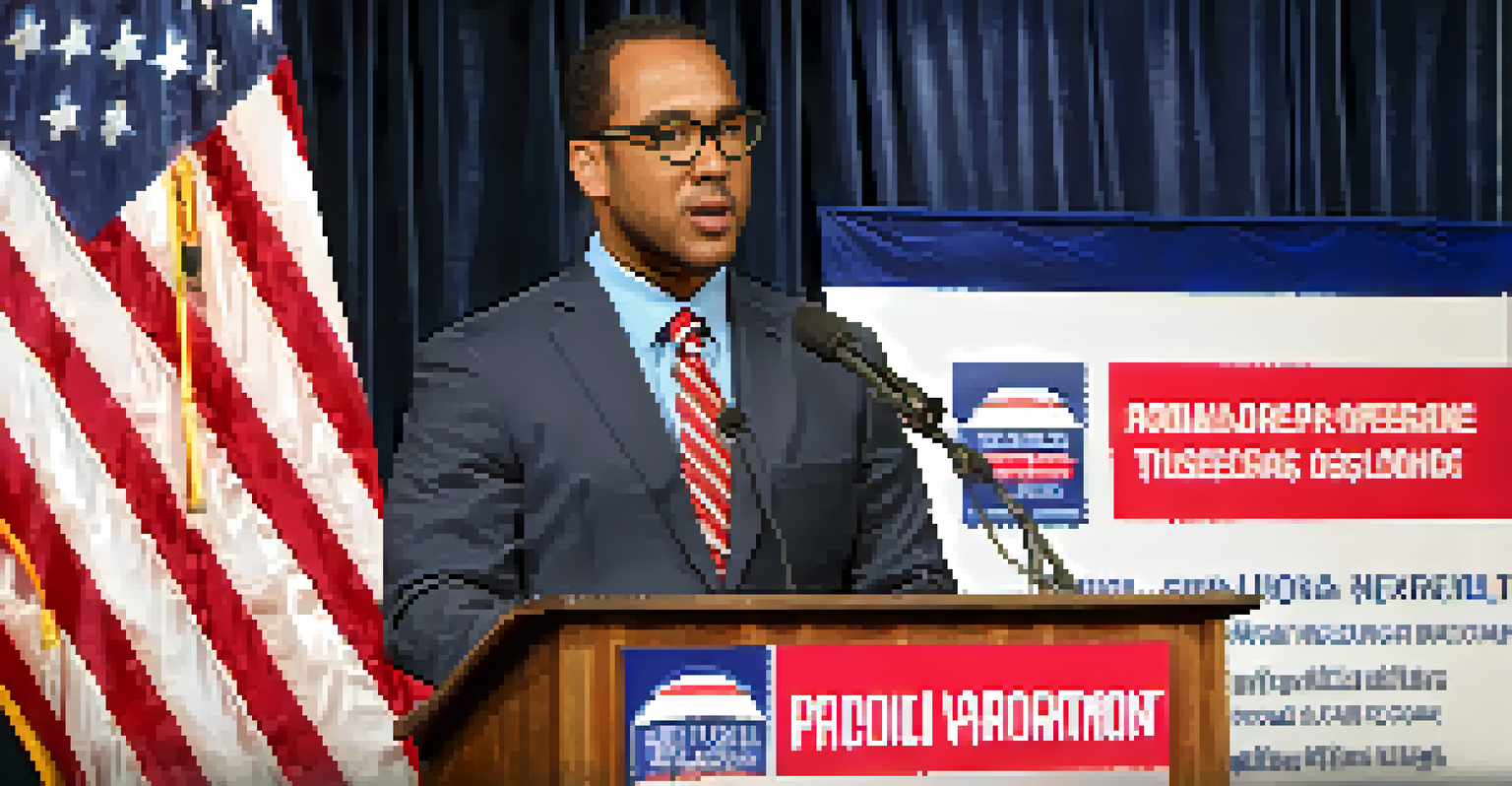The Role of Local Governments in Kansas Politics

Introduction to Local Governments in Kansas
Local governments in Kansas play a vital role in the political landscape. These entities, including counties, cities, and townships, are the closest form of government to the people. They handle essential services like public safety, education, and transportation, making their influence felt in everyday life.
Local government is where the rubber meets the road. It's the level of government that has the most direct impact on people's lives.
Understanding local government structures helps clarify how decisions affect citizens directly. Each layer of local government has specific responsibilities, impacting policies that range from zoning laws to local taxation. This makes them key players in the broader political arena.
Moreover, local governments often serve as the testing ground for new policies before they are adopted at the state level. This grassroots approach allows for more tailored solutions to local issues, demonstrating the unique needs of Kansas communities.
The Structure of Local Government in Kansas
Kansas local governments are structured in various forms, primarily as counties and municipalities. Each county is governed by elected officials, including a county commission, which oversees critical functions like law enforcement and public health. Cities, on the other hand, have their own governing bodies, usually a city council, which addresses local needs.

This decentralized structure enables a diverse range of governance styles across the state. For instance, larger cities like Wichita may have more complex systems to manage urban challenges, while smaller towns might operate with simpler frameworks. This flexibility allows local governments to respond effectively to the specific needs of their communities.
Local Governments Shape Daily Life
Local governments in Kansas are essential as they provide crucial services and create policies that directly impact residents' everyday experiences.
Additionally, local governments in Kansas can adopt ordinances and regulations that reflect the values and priorities of their residents. This autonomy empowers local leaders to make decisions that best serve their constituents, highlighting the importance of local governance in shaping political dynamics.
Elections and Local Government Influence
Elections at the local level can significantly influence the political climate in Kansas. Local officials often serve as the first line of decision-makers, setting the tone for community engagement and political activism. Their decisions can sway public opinion and motivate residents to participate in the electoral process.
The best way to predict your future is to create it.
For example, local elections may focus on issues like school funding or public safety, drawing citizens' attention to the political process. When local leaders champion specific causes, they can mobilize community resources and generate grassroots support that extends beyond their jurisdictions.
Moreover, successful local candidates often leverage their positions to gain traction for higher office, impacting state and national politics. This interconnectedness illustrates how local elections can ripple through the broader political landscape, influencing policies and governance at multiple levels.
Local Governments and Policy Implementation
Local governments in Kansas play a crucial role in implementing policies that directly affect residents. Whether it’s through local ordinances, zoning regulations, or public health initiatives, these entities are responsible for translating state legislation into actionable programs. This implementation is often tailored to meet the unique needs of each community.
For instance, if the state government passes legislation on renewable energy, local governments can create programs to promote solar panels and energy efficiency within their jurisdictions. This localized implementation enhances the relevance and effectiveness of policies, as local leaders understand the specific challenges their communities face.
Community Engagement Drives Decisions
Active citizen participation in local governance fosters transparency and ensures that local policies align with community needs and priorities.
Additionally, local governments often collaborate with state agencies to ensure a cohesive approach to policy implementation. This partnership not only strengthens the relationship between different levels of government but also enhances accountability and responsiveness to citizens' needs.
Community Engagement in Local Governance
Engaging the community is a fundamental aspect of local governance in Kansas. Local governments often host town hall meetings, workshops, and forums where residents can voice their opinions and concerns. This open dialogue fosters transparency and builds trust between officials and constituents.
Through community engagement, local governments can better understand the issues that matter most to their residents. For example, input from citizens can shape decisions on infrastructure projects, parks, and recreation programs, ensuring that developments align with community desires and priorities.
Moreover, active citizen participation can lead to more informed decision-making. When residents are involved in the governance process, they are more likely to support initiatives and hold their leaders accountable, creating a vibrant and participatory political culture.
Challenges Faced by Local Governments
Despite their importance, local governments in Kansas face several challenges that can hinder their effectiveness. Budget constraints often limit their ability to provide essential services, forcing officials to make difficult decisions about resource allocation. This can lead to tension between community needs and available funding.
Additionally, local governments may struggle with voter apathy, as residents sometimes overlook local elections in favor of state or national races. This lack of engagement can result in a disconnect between officials and the constituents they serve, making it challenging to address local issues effectively.
Challenges Hinder Local Effectiveness
Budget constraints, voter apathy, and regulatory complexities pose significant challenges for local governments in Kansas, impacting their ability to serve communities effectively.
Furthermore, navigating state and federal regulations can be complex for local governments. They must balance compliance with broader laws while striving to meet the specific needs of their communities. This balancing act requires careful planning and innovative problem-solving to ensure both compliance and local relevance.
The Future of Local Governments in Kansas
The future of local governments in Kansas is likely to be shaped by ongoing trends in technology, demographic shifts, and evolving political landscapes. As communities become more diverse, local governments will need to adapt their strategies to ensure inclusivity and representation. This includes addressing the unique needs of various populations within their jurisdictions.
Technological advancements also hold the potential to enhance local governance. Digital tools can streamline communication between officials and residents, making it easier for citizens to engage with their local government. This increased accessibility can foster greater participation and transparency.

Moreover, as issues like climate change and economic disparities become more pressing, local governments will play an essential role in developing innovative solutions. By harnessing community resources and fostering collaboration, local leaders can address these challenges head-on, ensuring a resilient and responsive political landscape in Kansas.